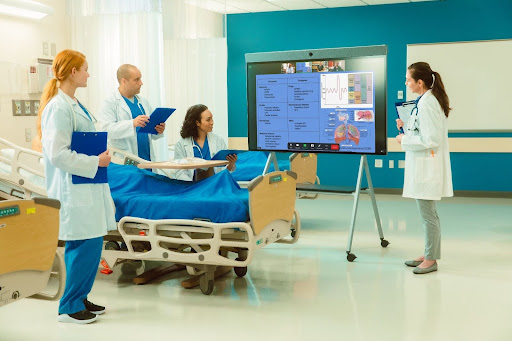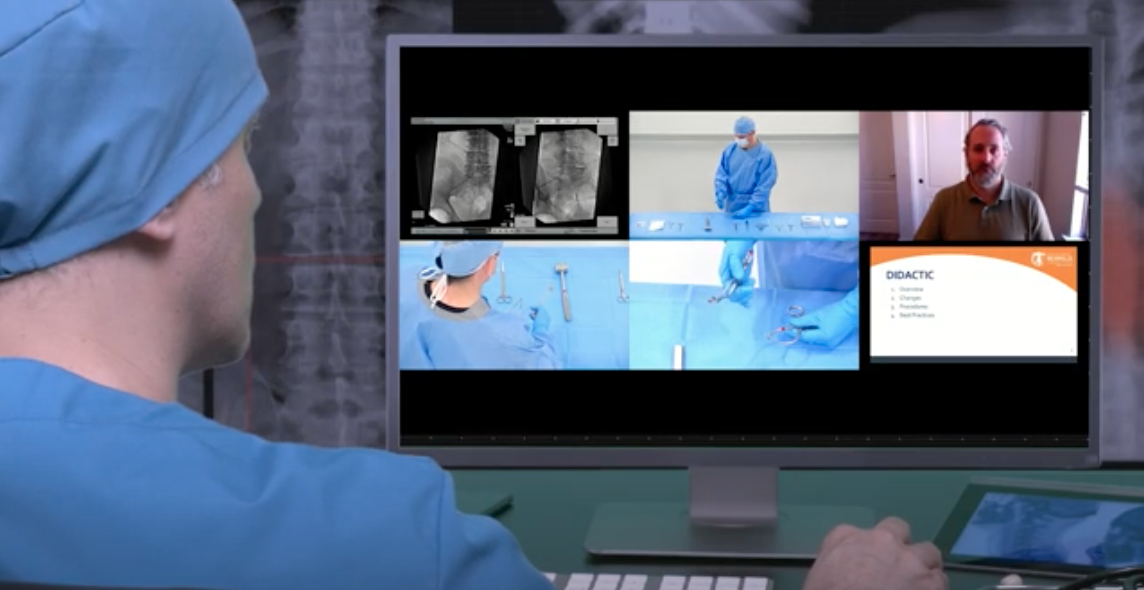
Re-imagining healthcare with Zoom’s AI-first platform
Zoom for Healthcare enables healthcare organizations to deliver seamless experiences across the patient journey and enhance collaboration among providers.
Updated on September 22, 2022
Published on June 10, 2021


The medical industry, already known for rapid innovation, moved at lightning speed to implement new ways of delivering care during the COVID-19 pandemic. Zoom has been the solution of choice for medical device companies to provide remote clinical and technical support.
When doctors’ offices closed, millions of patients connected with their providers virtually. When medical experts couldn’t travel to hospitals to provide essential training or teams of specialists couldn’t gather in a room to examine a patient, Zoom helped enable virtual consultations, transfer of knowledge, and continuity of care.
Medtech companies like Medtronic have even brought Zoom into the operating room to livestream surgical procedures with an intelligent video integration solution developed by CrowdOptic, in partnership with Intel and Hewlett Packard Enterprise. This cutting-edge integration solution provides greater access to knowledge, expertise, and critical support for surgeons, and opens up a variety of new applications for virtual care and support in the medical field.
The logistics and cost of sending sales reps to healthcare facilities around the country pose significant challenges for medical and pharmaceutical companies, even before COVID-19 halted travel altogether.
CrowdOptic built a secure, HIPAA-compliant platform that uses artificial intelligence in video analytics to livestream surgical procedures over Zoom for clinical support and physician training. Here’s a look at what this technology brings to the OR:
With little room for error in the surgical suite, the technology has to be precise and reliable. Using Zoom, CrowdOptic’s solution provides low-latency (<200ms) HD video and a smooth, stable streaming experience, regardless of geographic location.
The remote experience has to be immersive and high-quality enough so viewers can engage in dialogue with surgeons, view the procedure from multiple vantage points, and get the same benefits as if they were in the operating room.
The CrowdOptic live streaming system addresses these issues with the ability to integrate up to 24 cameras to provide a seamless, immersive experience over Zoom. In addition to multiple views, CrowdOptic integrates information and images from medical devices like ultrasounds, C-arms, and other equipment.
Hospitals need the technology to be intuitive and virtually invisible so surgeons can focus on the operation, not the video stream. CrowdOptic’s system uses AI to identify and track subjects of interest in the frame, eliminating the need for technical support or production in the operating room.
Surgical teams can even create “rules” for the system; for example, a surgeon raising a hand can trigger a certain camera to zoom in, enhancing the quality and level of engagement for remote viewers.
“It has to be easy to use, out of the proverbial box, especially in acute situations — like the operating room and even the ICU — where things are extremely fast-moving. Zoom’s simplicity and quality made it the perfect fit to help us scale and connect the operating room to the world,” said Jon Fisher, co-founder and CEO of CrowdOptic.
By improving access to training and expertise, remote technologies have allowed medical device, pharmaceutical, and biotech companies to enhance how they support physicians, improve the productivity of their salesforce, and even facilitate the launch of new products.
For example, “organizations need experts to be present in multiple operating theaters around the world on the same day. They need 100 surgeons to be able to tune in for innovative training. They need to be able to provide a different option than sending an employee into a potentially dangerous environment where they could get sick,” Fisher said. “That’s what makes this type of solution a must-have in every direction.”
In the same vein, hospitals and surgical centers can use video in innovative ways to provide more efficient learning opportunities and less costly solutions for virtual care and support.
“There’s so much knowledge to be transferred from one person to another,” added Rich Smith, CrowdOptic’s VP of product. “There are so many people who are looking to be in the room with world-leading surgeons. It’s different than watching a videotape or recording. The interactive component is key.”
Innovation in the medical field is bound to grow quicker than it has in the previous few years. With more opportunities to bring training, proctoring, and consultation into the virtual space, even in situations as complex as live surgery, medical professionals will be able to expand their body of knowledge, learn from leading minds, and bring those benefits back to their patients.
Visit the Zoom for Healthcare page to learn how the Zoom platform helps support all types of healthcare communication, from telehealth to medical education and training for medtech, pharmaceutical, and biotech companies.